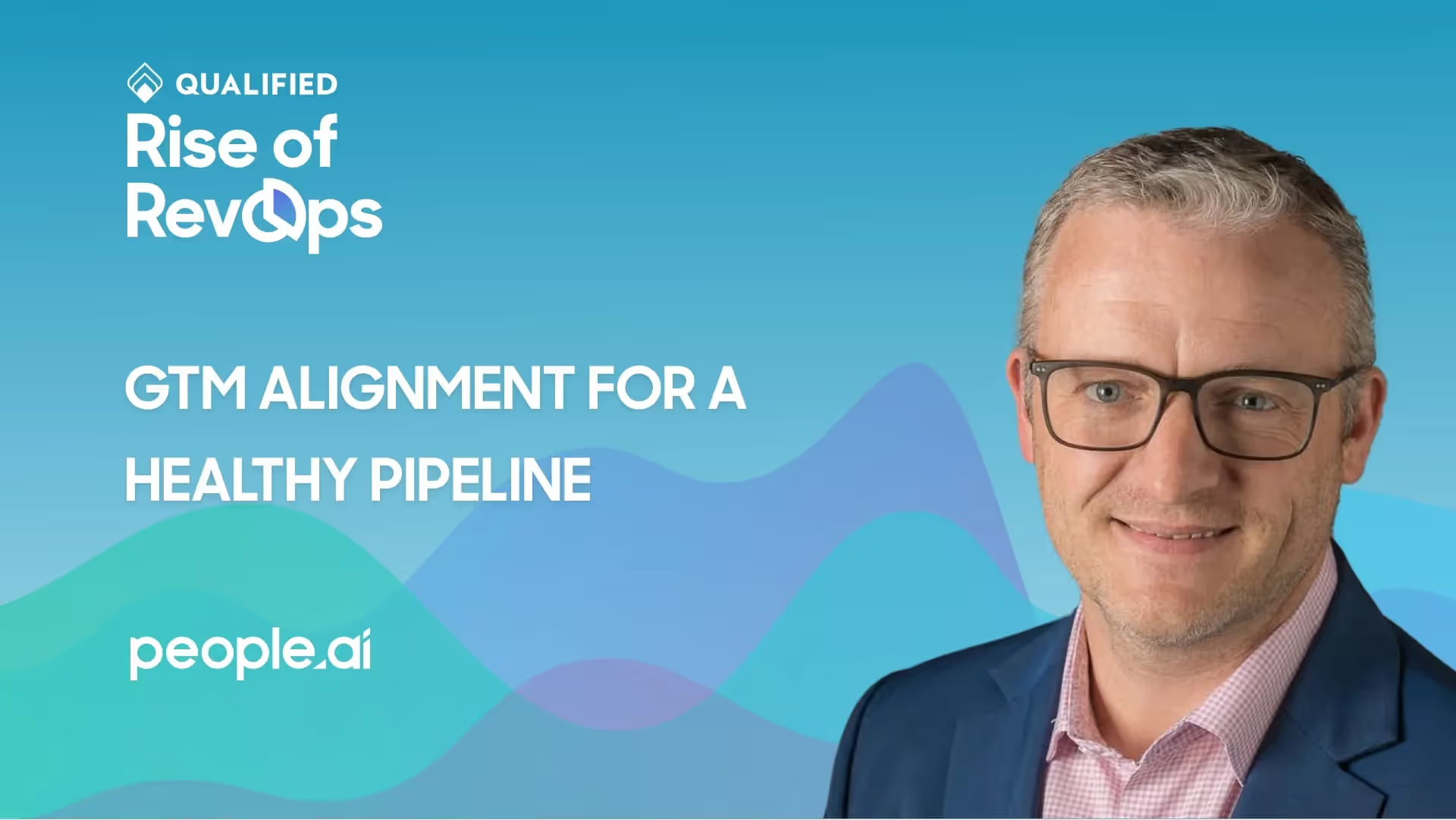GTM Alignment for a Healthy Pipeline
On this episode, we talk to Art about crafting your rev ops roadmap, the importance of leadership alignment, and Art breaks down his rev ops swim lanes for us.




On this episode, we talk to Art about crafting your rev ops roadmap, the importance of leadership alignment, and Art breaks down his rev ops swim lanes for us.

In this episode, we talk to Art Harding, Chief Operating Officer at People.ai, about crafting your rev ops roadmap, the importance of leadership alignment, and Art breaks down his rev ops swim lanes for us.
Key Takeaways
Stay up to date with weekly drops of fresh B2B marketing and sales content.
On this episode, we talk to Art about crafting your rev ops roadmap, the importance of leadership alignment, and Art breaks down his rev ops swim lanes for us.


In this episode, we talk to Art Harding, Chief Operating Officer at People.ai, about crafting your rev ops roadmap, the importance of leadership alignment, and Art breaks down his rev ops swim lanes for us.
Key Takeaways
Stay up to date with weekly drops of fresh B2B marketing and sales content.
On this episode, we talk to Art about crafting your rev ops roadmap, the importance of leadership alignment, and Art breaks down his rev ops swim lanes for us.


In this episode, we talk to Art Harding, Chief Operating Officer at People.ai, about crafting your rev ops roadmap, the importance of leadership alignment, and Art breaks down his rev ops swim lanes for us.
Key Takeaways
Stay up to date with weekly drops of fresh B2B marketing and sales content.
On this episode, we talk to Art about crafting your rev ops roadmap, the importance of leadership alignment, and Art breaks down his rev ops swim lanes for us.



In this episode, we talk to Art Harding, Chief Operating Officer at People.ai, about crafting your rev ops roadmap, the importance of leadership alignment, and Art breaks down his rev ops swim lanes for us.
Key Takeaways
Discover how we can help you convert more prospects into pipeline–right from your website.